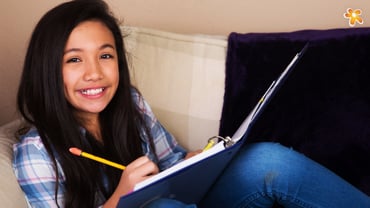Childhood Apraxia of Speech
Childhood apraxia of speech (CAS) is a speech disorder that affects motor skills. The disorder results from the brain’s inability to coordinate the lips, jaw and tongue into the movements necessary for proper speech. Lack of strength or range of motion in the mouth does not cause CAS, nor does slowed thinking. Children with this motor speech disorder know what they want to communicate. Their brains simply falter when they go to move the body parts needed for voicing their thoughts.
Of course, the symptoms of CAS vary depending on the severity of an individual’s speech apraxia. However, in young children several characteristics hint at CAS. One may notice:
- Little, if any, baby talk
- Delay in speaking words
- Limited pronunciation of various consonant or vowel sounds
- Simplification of words (e.g: by replacing hard-to-produce sounds with simpler sounds)
- Difficulty eating
And in older children, individuals with CAS may:
- Make sound errors that lack consistency
- Have an understanding of language that exceeds their ability to use language
- Imitate speech more easily than they speak spontaneously
- Struggle when trying to speak
- Be difficult to understand, especially to unfamiliar listeners
Remember, these signs of CAS are generalizations and should not be used as diagnostic criteria. Sometimes hearing loss results in similar symptoms; we recommend that parents have their children’s hearing tested by an audiologist in order to rule out other possible reasons for the child’s speech problems.
A certified speech-language pathologist should conduct an evaluation of your child’s oral-motor abilities, and intonation and pronunciation development. These assessments involve examining a child’s coordination of movements in the mouth and listening to a child’s speech, which indicates problems with oral-motor skills. After an evaluation a speech-language pathologist can confirm or reject a CAS diagnosis.
Sometimes children are taught sign language or alternate forms of communication if their apraxia makes speech especially difficult. This tool makes communication easier during the duration of treatment, and can even support treatment.
Treatment for children with apraxia of speech often comes in the form of speech therapy. Speech therapy sessions see the most positive results when they take place at least three to five times each week, and when the child receives one-on-one attention. The goal of speech therapy is to teach children how to better coordinate and control the muscles of their mouths when speaking.
Various forms of feedback help a child during treatment. Touching, seeing and hearing ones progress during therapy sessions or while practicing (for example, the child might watch his/her mouth form sounds in the mirror) help a child learn more readily.
The means to defeating childhood speech apraxia lie in practice and support. Overcoming CAS requires time and commitment on the parts of the both the child and the child’s family. The child needs to persevere with practice in order to improve his or her speech, but he needs the help and support of his family as to avoid exasperation. Speech disorders can be frustrating and therefore require patience all around. We encourage parents to visit a local speech-language professional in order to make the best decisions for their child.
For more information visit asha.org.
Childhood Apraxia of Speech
Published: May 2008 © Carolina Pediatric Therapy
Want to know how a Therapist can Help?
Call (828) 398 0043 or click on the schedule button.
Post navigation
You may also like

Literacy and Writing | Speech and Writing Disorder
- speech disorder effects, Writing, cognitive-communication disorders, Language Disorders, emergent literacy, reading success, writing success, Phonological, trouble spelling, trouble reading, Speech Disorders, Speech-sound disorders, asheville preschool, voice disorders, Literacy & Writing, trouble writing, fluency disorders, Literacy


